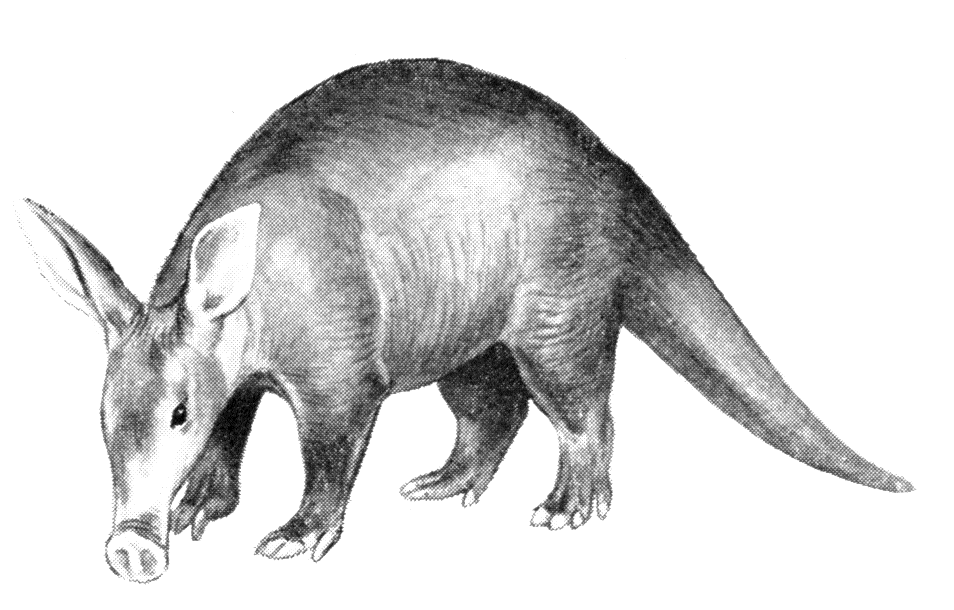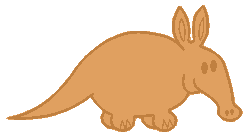
AARDVARK (ANT-BEAR or EARTH-PIG from the Dutch)
Orycteropus afer
|
Identification: typically 48-54" (112-137cm.), but individuals have been measured at 70" (178cm.); tail 19-24" (48-61cm.), height at shoulder 15-16" (38-41cm.). A grotesque, thickset animal with blunt but strong, digging claws; greyish or reddish-brown in colour with very sparse bristly hairs, though the Cape aardvark is pale sandy or yellow with little hair; the head is narrow with an elongated snout; long pointed ears. Tail thick at base but tapering to a point. Feeds upon ants and termites which it sweeps up with its extremely long viscid tongue. Strictly nocturnal and although common, seldom seen as they burrow; solitary; terrestrial. Although generally slow moving, they can run quite fast if threatened, and being powerful are difficult to stop and are not inhibited by bush and scrub. Distribution and Habitat: Widespread in East Africa in localities where there are termite hills. Also found in South Africa and as far north as Egypt. Its diggings are often the only indication that the animal is present. Three types of burrow are thought to be dug by the aardvark:
These burrows, once vacated, provide useful shelter and refuge for a wide range of other species including: large and small members of the cat and dog families, porcupine, mongoose, some birds and even crocodile and python. The diet, although predominantly ants, can include fruit and small mammals such as mice. The female normally gives birth to a single young during the cooler winter months from May to August. |
Top of page
If you are really into aardvarks, then you can find even more good stuff about them here.
Visits to this page since 28th Nov. 1999:
webmaster@aardvark-world.org.uk N.B. these pages do not
require the latest version of Netscape or Explorer.
Back to the Aardvark-World Home Page
